Today, was opinion day with the Supreme Court. One of the opinions announced was a relatively mundane question of copyright law, which seemed like an unlikely place for a judicial ‘flame war,’ to erupt, but that is exactly what happened.
We also saw another split between the liberals today, with Sotomayor and Jackson splitting sharply from Kagan in the Andy Warhol case, complete with cutting snipes back and forth, like this one from Kagan directed at Sotomayor (!). https://t.co/ew8BmInWZO pic.twitter.com/JBTl7SH17l
— Mark Joseph Stern (@mjs_DC) May 18, 2023
But let’s rewind for a moment, here. The case is Andy Warhol Foundation for Visual Arts, Inc. v. Goldsmith (2023). The short version is this. Lynn Goldsmith is a photographer who once photographed the musician Prince. In 1984, Vanity Fair wanted to do a piece on Prince and they wanted a Warhol portrait of Prince to accompany the article. So, they paid Goldsmith a fee to let Warhol use her picture as the basis of creating one of his usual works, Goldsmith insisting as part of the deal it would be a ‘one time’ thing. Warhol created the work. He got paid and Goldsmith got paid. So far, so good. No lawsuits.
Then a few years back, Prince died. Lots of magazines wanted to do articles and even special issues about the star’s life and death. And it turned out that Warhol had actually made a bunch of works based on that photo of Prince that he hadn’t released. So Condé Nast bought the rights to a different Warhol ‘Prince,’ (Warhol was dead by then) but it was based on the same photo. Crucially, no one paid Goldsmith a dime for this use.
Here’s a relevant illustration from the opinion:
So, Goldsmith sued the Warhol Foundation (which owned the rights to Warhol’s work), arguing that they owed her a new fee. But the Warhol Foundation offered the affirmative defense of fair use (an affirmative defense is something the defendant has to prove that get him or her out of trouble). Basically, you can ‘rip off’ someone’s work if you are using it in a way that sufficiently transforms it. For instance, if you read the opinion, you will see constant references to a Campbell case. That’s a reference to when the Roy Orbison estate sued the rap group 2LiveCrew for ripping off ‘Oh, Pretty Woman,’ but they won on the theory that their ‘rip off’ is a parody of the original song. Parody is a classic example of fair use. So is criticism, which why the Everything Wrong With YouTube series is probably engaging in lawful use of material from various movies.
Everything Wrong With Top Gun In 20 Minutes Or Less https://t.co/2SMqZxkM8S pic.twitter.com/0pOVbkRShN
— donvy (@donvy) May 24, 2022
And as a practical matter, the Warhol Foundation was kind of on the backfoot on their argument because the first time Goldsmith was paid. So, in essence they had to argue that no one ever had to pay Goldsmith in the first place and while it is not impossible to make that argument, but it is harder than if no one had actually paid her the first time.
Recommended
But that’s all background. Let’s get to the cat fight:
Sotomayor accuses Kagan of making "a series of misstatements and exaggerations, from [her] very first sentence" to the "very last." Jennifer Walker Elrod must aghast at such rhetoric! https://t.co/ew8BmInpag
— Mark Joseph Stern (@mjs_DC) May 18, 2023
A lot of Sotomayor's digs at Kagan claim that Kagan just doesn't understand the arguments that Sotomayor is making … again, unusually spicy stuff here. pic.twitter.com/7RTedg7ZgN
— Mark Joseph Stern (@mjs_DC) May 18, 2023
This person is responding specifically to the Kagan footnote:
sorta weird that her sharpest rhetoric… maybe ever… is aimed at a sotomayor opinion
— 563 US 493 (@borrfdad) May 18, 2023
“Hey siri, how do you say “sore loser” in legalese?”
— Frank J. Dyevoich, Esq. (@Fantasy_Giant) May 18, 2023
Striking. Kagan crushing a Sotomayor law clerk? SS not doing enough supervising of her team? Something that could have been better handled not in print by both justices? Just human stuff that happens, especially in tough work situations, even among friends?
— John Q. Barrett (@JohnQBarrett) May 18, 2023
Cat fight!
— Fred’s Top Hat (@mostly_tedious) May 18, 2023
good lord that was a long-winded opinion. the whole thing. for god's sake people you're on the clock. 2-3 paragraphs max. sheesh.
— JohnB (@farmerjohn1958) May 18, 2023
He’s an optimist.
Justice Kagan was my admin law prof at HLS. She had this same sense of humor then too. Great professor, by the way.
— Jarod Bona (@JarodBona) May 18, 2023
Interesting if true.
1 of 2: Incredible. I've never read a footnote like that before. Two observations: 1) Kagan is such a strong writer it's tempting to assume she's correct, but I'm not a fair use scholar and it was 7-2, not 5-4, and didn't break on traditional political lines.
— Jason Jarvis (@jjcruiser) May 18, 2023
By the way, it was Chief Justice Roberts who joined Kagan. And for the record, the most senior justice in the majority decides who writes the majority opinion. So that means Thomas assigned Sotomayor to it.
Who is ProPublica going to go after? pic.twitter.com/vB6xMCw4Kk
— Kewgardens (@kewgardens1) May 18, 2023
Interesting to see how heated the disagreement between Sotomayor and Kagan is. https://t.co/K5r9mHb9xa
— Ed Whelan (@EdWhelanEPPC) May 18, 2023
— Abri (@mm77atl) May 18, 2023
We are with her on that.
Kagan apparently wearying of Sotomayor being Sotomayor. https://t.co/3ywXAtUEoF
— Dan McLaughlin (@baseballcrank) May 18, 2023
I am doubting the “respectfully” part of that dissent. Wow. https://t.co/R8Vm60DCWy
— Raffi Melkonian (@RMFifthCircuit) May 18, 2023
Not that J. Sotomayor is above using Twitter memes to hit at Kagan. pic.twitter.com/oB75viKqSZ
— Raffi Melkonian (@RMFifthCircuit) May 18, 2023
Justice Kagan on the self-refuting nature of Justice Sotomayor's majority opinion: "After all, a dissent with ‘no theory’ and ‘[n]o reason’ is not one usually thought to merit pages of commentary and fistfuls of comeback footnotes.”
Ouch!https://t.co/z1cxbHKg2N via @TheNLJ
— Laurence Tribe 🇺🇦 ⚖️ (@tribelaw) May 18, 2023
Would not have guessed that the sharpest dissent this term would be … Kagan going after Sotomayor.
Random note: When I was in law school—not sure about now—I had a really old-school preference for majority opinions that didn't directly address dissents at all. https://t.co/hPzejM5lGo
— legalrealist (@legalrealist) May 18, 2023
“Ratio of reasoning to ipse Dixit.”
That is brutal
— Raffi Melkonian (@RMFifthCircuit) May 18, 2023
Elena Kagan Takes Shot at Sonia Sotomayor in Unusual SCOTUS Opinion Note: ‘I’ll Take My Chances on Readers’ Good Judgment’ https://t.co/fL2GtFagDb
— Mediaite (@Mediaite) May 18, 2023
I’m not sure how one would quantify this, but it’d be interesting if someone could figure out whether SCOTUS opinions are less collegial now than before. Today’s Sotomayor/Kagan clash really stood out on that front.
— Matt Ford (@fordm) May 18, 2023
To anyone who follows this stuff closely, the Kagan-Sotomayor thing isn't particularly surprising. Copyright law seems to make otherwise normal people go completely nuts.https://t.co/Fs67s7ntFZ
— Bill Donahue (@Bill__Donahue) May 18, 2023
1. Kagan is absolutely right & there are solid precedents for fair use in the art world, & they are this important. This was a really bad call.
2. The reply guys making 'cat fight' jokes about Kagan and Sotomayor have raised my blood pressure several points this morning. https://t.co/2AbcjXiBZ5
— Heidi Richardson she/they (@mystrangebones) May 18, 2023
We were debating whether or not to use ‘cat fight’ in the title to this article, but now we feel compelled to use the term just to annoy her.
This may be the shadiest footnote in SCOTUS history. The fact that it's between two allegedly ideologically-aligned Justices (Kagan writing about Sotomayor's opinion) is all the more noteworthy. ☕ pic.twitter.com/LUhwu3Y9xK
— Ms.Bolles (@MsBolles114) May 18, 2023
Warhol (basically):
“Dude. I’m Andy Warhol. If I did it I transformed it. That’s my jam. Soup cans. Bananas. Marilyn. You get me.”
Goldsmith & the Majority:
“But um if everything an artist touches is transformed doesn’t fair use swallow up infringement by derivative work!?”
/6 pic.twitter.com/ucP5shOCAi— Michael Kasdan (@michaelkasdan) May 18, 2023
Justice Sotomayor’s recitation of the facts emphasized that both Warhol and Goldsmith were in the business of licensing their works – including works featuring Prince – to magazines, i.e., the market for the original copyrighted image and the work at issue were the same.
/7 pic.twitter.com/GUx3lIw0UA— Michael Kasdan (@michaelkasdan) May 18, 2023
Really, one of the divisions we see in the opinion is how the court views the competing artists. For instance, here’s how Sotomayor explains who Goldsmith is:
Lynn Goldsmith, is less well known [than Warhol]. But she too was a trailblazer. Goldsmith began a career in rock and-roll photography when there were few women in the genre. Her award-winning concert and portrait images, however, shot to the top. Goldsmith’s work appeared in Life, Time, Rolling Stone, and People magazines, not to mention the National Portrait Gallery and the Museum of Modern Art. She captured some of the 20th century’s greatest rock stars: Bob Dylan, Mick Jagger, Patti Smith, Bruce Springsteen, and, as relevant here, Prince.
The level of admiration of Sotomayor is displaying is pretty obvious. By comparison her discussion of Warhol is pretty muted.
Meanwhile in the Kagan dissent …
This is a rather intense fault line between Kagan and Sotomayor. Justice Kagan really loves Andy Warhol. pic.twitter.com/uWIpOm927d
— Anthony Michael Kreis (@AnthonyMKreis) May 18, 2023
… and he’s not kidding. She goes on for pages about how Warhol is a great artist. Frankly, we tend to think he is at best overhyped, but she makes as good a case for why his work is good and important as we have ever seen.
On the other hand, Goldsmith is barely mentioned. And it could be just as dumb as that—Kagan really likes Warhol, while Sotomayor sees Warhol as taking a woman’s work, changing it a little and then taking credit for it. A huge part of the Sotomayor majority opinion is concerned with whether or not Warhol’s print overshadows Goldsmith’s work, saying that the question of fair use ‘requires courts to ask whether consumers treat a challenged use ‘as a market replacement’ for a copyrighted work or a market complement that does not impair demand for the original.’ To put it bluntly, if Warhol’s print didn’t exist, they might have used Goldsmith’s picture instead.
And in that context, it is relevant that Sotomayor said
I would hope that a wise Latina woman with the richness of her experiences would more often than not reach a better conclusion than a white male who hasn’t lived that life.
Contrary to what Sotomayor said when challenged before the Senate, that phrasing was a deliberate response to what Justice Sandra Day O’Connor said when arguing that men and women were equal in the legal profession:
Do women judges decide cases differently by virtue of being women? I would echo the answer of my colleague, Justice Jeanne Coyne of the Supreme Court of Oklahoma, who responded that ‘a wise old man and a wise old woman reach the same conclusion.’
The notion that women ‘thought differently’ about law was used for centuries as an excuse to keep them from being lawyers or judges. But many modern feminists now think women are in fact different and better and Sotomayor was echoing them. Thus, it is fair to suspect a bit of bias on the part of Sotomayor in this fight between a woman and a man’s estate.
And the fact that you have to wonder that about Sotomayor is a bigger problem than Clarence Thomas having a rich and generous friend. With Sotomayor, that is documented evidence of bias.
Wow. Things got testy and personal between Kagan and Sotomayor in the Warhol case. Kagan breaks the fourth wall and goes straight to the American public to say believe me not Sotomayor. Don’t think I’ve ever seen that at SCOTUS. 👇 pic.twitter.com/SQk8sY76ZE
— Roger Severino (@RogerSeverino_) May 18, 2023
And it really did get testy and personal. From Sotomayor’s majority:
The dissent makes a similar mistake with Google [referring to a case, not the search engine]: It fails to read the decision as a whole. So while the dissent claims that the ‘[Google] Court would have told this one to go back to school,’ it might be easier just to go back and read Google.
And this suggests she sees Goldsmith as the underdog against Warhol:
[T]he dissent (much like the District Court) treats the first factor as determined by a single fact: ‘It’s a Warhol.’
Meanwhile, Kagan basically suggests Sotomayor just doesn’t ‘get’ Warhol:
So it may come as a surprise to see the majority describe the Prince silkscreen as a ‘modest alteration[]’ of Lynn Goldsmith’s photograph—the result of some ‘crop[ping]’ and ‘flatten[ing]’—with the same ‘essential nature.’ … Or more generally, to observe the majority’s lack of appreciation for the way his works differ in both aesthetics and message from the original templates.
This one is particularly nasty:
The majority does not see it. And I mean that literally. There is precious little evidence in today’s opinion that the majority has actually looked at these images, much less that it has engaged with expert views of their aesthetics and meaning.
And this is also pretty harsh, when responding to how the majority described Warhol’s work:
The description is disheartening. It’s as though Warhol is an Instagram filter, and a simple one at that (e.g., sepiatinting). ‘What is all the fuss about?,’ the majority wants to know.
The overall tone of the dissent is quite remarkable.
— Andrew Desmond (@beautifullybunk) May 18, 2023
That’s another valid point. In addition to the infighting, Kagan’s dissent is often just weird. For instance, on pages 79-80, she is discussing how much art is taken from other art—which is a good point—and then she writes: ‘I won’t point fingers, but maybe rock’s only Nobel Laureate and greatest-ever lyricist is known for some appropriations?’ So, at this point, she is being coy, refusing to name who she is talking about. Then in the footnotes she writes: ‘OK, you guessed it—Bob Dylan.’
At another point, she quotes a different source and then says in a footnote: ‘In the spirit of this opinion, I might have quoted that line without further ascription. But lawyers believe in citations …’ so then she actually gives a citation. In another footnote, she says ‘I have to admit, I stole that last phrase from…’ and gives another citation. At another point, in the text she cites numerous people pointing out how imitation is common in art, and then has a footnote announce another citation by saying, ‘OK, one last one.’ That kind of behavior is perfectly appropriate for a Twitchy article, but downright weird for a legal opinion. You can decide for yourself whether it is delightfully playful, which seems to be what Kagan was going for, or unjudicial in tone.
Buried under all this infighting are important principles that relate to the flourishing of art. On one hand, artists need to make money off their works and copyright is, at the bottom, about helping to make art profitable. If you want people to take pictures of rock stars and other celebrities, or to write books, or to make movies, artists need to get paid so the most talented people are encouraged to make art.
But at the same time, copyright law can be used to stifle creativity—even criticism. There are several YouTubers who like to critique movies that find that copyright concerns often get their videos taken down—and one suspects it was done because of their harsh criticism. More alarmingly American copyright laws were used to suppress information about Hitler. Journalist Alan Cranston discovered that the version of Mein Kampf sold in America was heavily edited to make Hitler seem less like the complete psychopath he was. So, Mr. Cranston published a complete translation so Americans could see for themselves what Hitler was. The relevant rights holder, Houghton Mifflin, sued and got the court to stop him from publishing the full book … in 1939. You know, when we really could have used that information. So, it is important not to let copyright law be so strong that it strangles valid uses and that is the balance they are trying to strike here. Today’s ruling favors the original copyright holder over the person who wants to make use of it for their own purposes, but we don’t think it is quite the stranglehold Kagan thinks it is.
As for the Warhol estate, it’s a little complicated, but the Supreme Court was only focusing on one part of the test for fair use, so it might be possible for the Warhol estate to win in the end. But certainly, this was a setback for them.
And in the longer term, will the rift we saw today between Justices Kagan and Sotomayor expand over time? Or will they reconcile? We shall see.
***
Editor’s Note: Do you enjoy Twitchy’s conservative reporting taking on the radical left and woke media? Support our work so that we can continue to bring you the truth. Join Twitchy VIP and use the promo code SAVEAMERICA to get 40% off your VIP membership!

















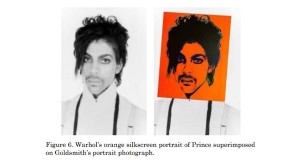


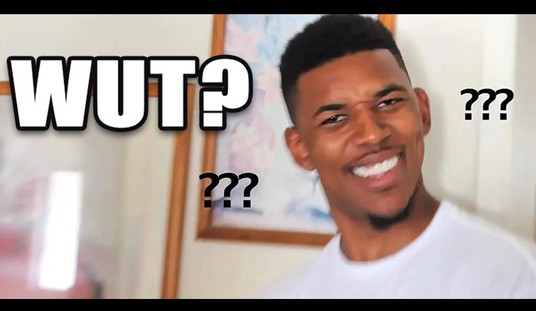
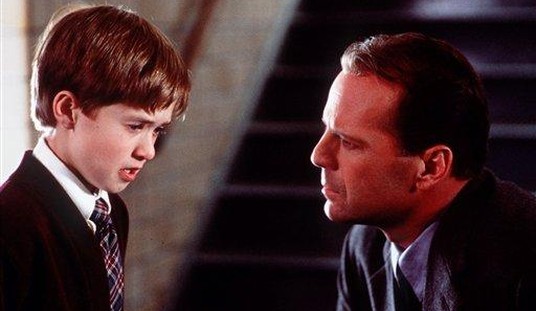
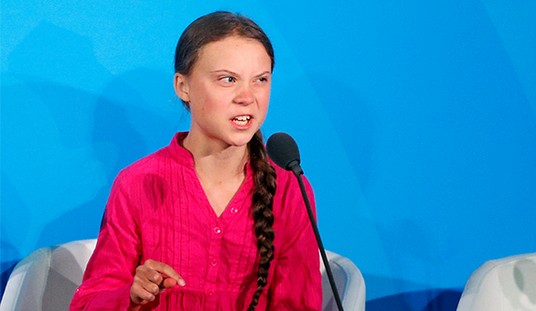
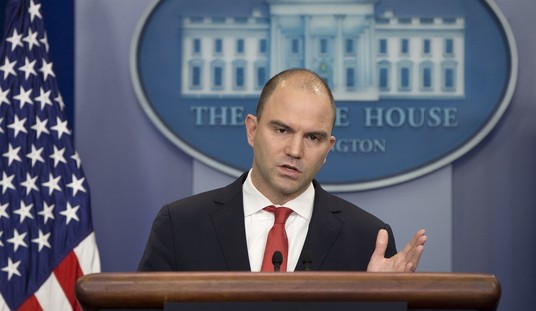

Join the conversation as a VIP Member